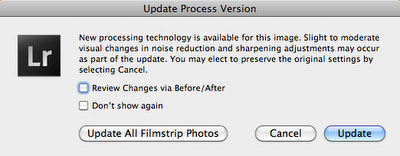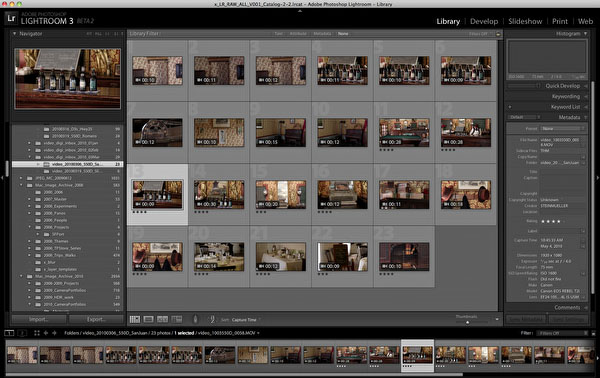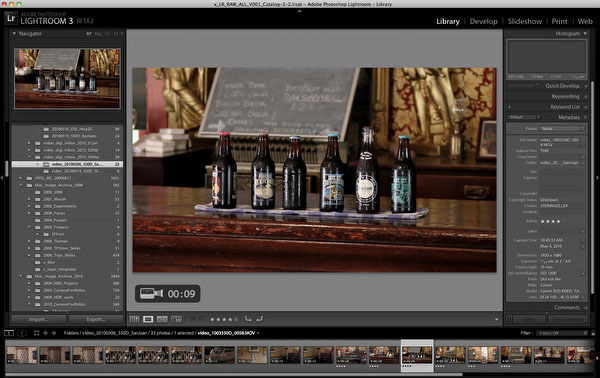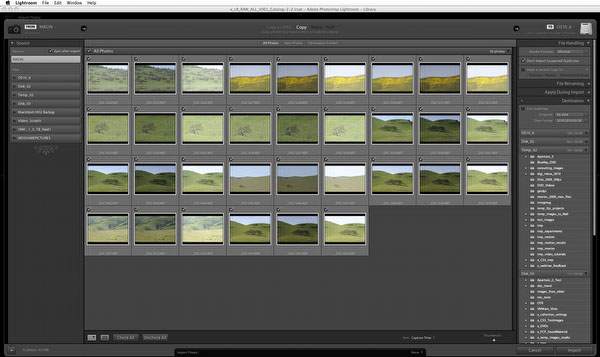Note: we updated some parts that differ between the LR3 Beta 2 and the final release.
We look at the main features in the order we find them important for our own work.
Lens Corrections
Lens Correction is clearly our top feature in Lightroom V3. We would recommend to upgrade to LR3 if this would be only new feature. We have already posted a full article about this important new feature (read more here).
Improved Processing and noise removal
Handling of noise has been improved quite a bit and should now be at an state-of-the-art level. The new processing required to introduce a new Processing Version called 2010 (the old one is 2003). The idea is to allow the user for old images to keep the old processing to avoid surprises. We switch all images when we work on them to version 2010.

If you are in Develop the "!" in the lower right corner of the preview signals that this image uses still the 2003 Processing Version. Click on it and you see the following dialog:

This allows you to make conscious decision to upgrade or not. If you made the switch by mistake you can easily go back to the 2003 version on an image by images basis. The active version also shows in the Camera Calibration panel.

Some functionality is now reorganized to different panels.
Basic

From the UI nothing changed here. But it seems that Recovery and Fill Light are improved to avoid possible tone inversions and artifacts.
Point Curve
While Camera Raw could edit the Point Curves LR 2.x did not allow the same. Now also LR3 can edit the Point Curves

We still prefer to use the Parametric Curves tool because it is easier to handle. If you are a Curves expert the Point Curves are all yours now.
Detail

LR3 features now much improved noise removal (Color noise and Luminance noise). The whole noise is more replaced by nicer looking grain.
Effects

Post-Crop Vignette and Grain find their new home here.
Video import
For most HDSLRs you can now also import videos in LR3. (not from AVCHD files that are created by the Panasonic cameras).

Videos shown in Grid mode

Shows single frame
If you want to watch the clip it gets opened in your System's default player (e.g. Quick Time 10 on Mac OSX 10.6).
Tip: Quick Time Pro 7is actually more advanced than QT 10. In this case drag&drop the video clip from LR3 onto the QT 7 icon on the dock (after you added QT 7 to the dock).
What is video support in LR3 good for?
- One import for video and stills (including renaming)
- Rating and keywords in LR
- Can create even Smart collections from video clips
- Shows shooting info like (lens, focal length, shutter speed, f-stop and more). This is a big plus!
Overall very useful.
Tethered Shooting

For same Canon and Nikon cameras tethered shooting is supported. Some may find it too limited and others just what they need.
Import Dialog

The new import dialog looks more pretty. We were happy with the old simple yet fine import dialog. Over time we will get used to the new dialog.
More Features

- Improved Watermarking
- Custom print packages
Conclusion
For us the new processing, noise removal and video support make Lightroom 3 interesting. Overall Lightroom 3 looks more like an evolution from LR 2.x. In some way we mean this positive because there is a clear tendency to put too many features into new versions which can confuse more than really help.
Here is our short wish list of features we like to see:
- Soft proofing
- Allow to select the program that opens video by default (e.g. Bridge allows me to set QT 7 as my default viewer)
|